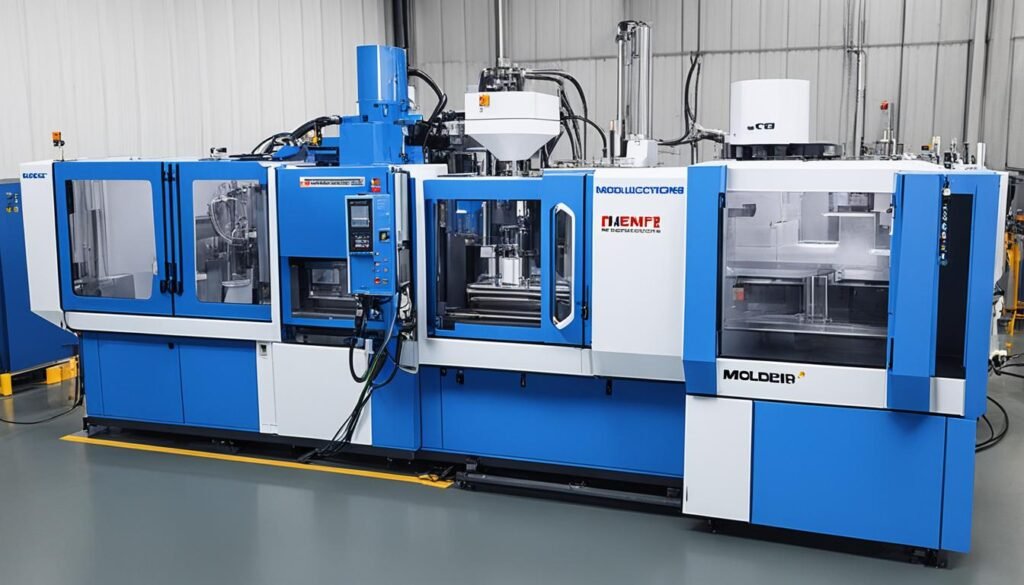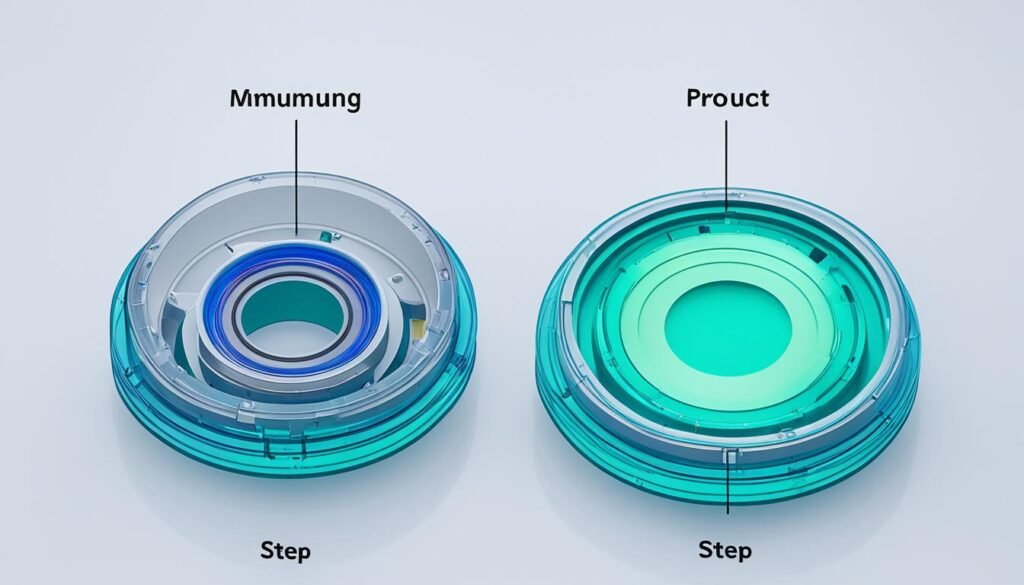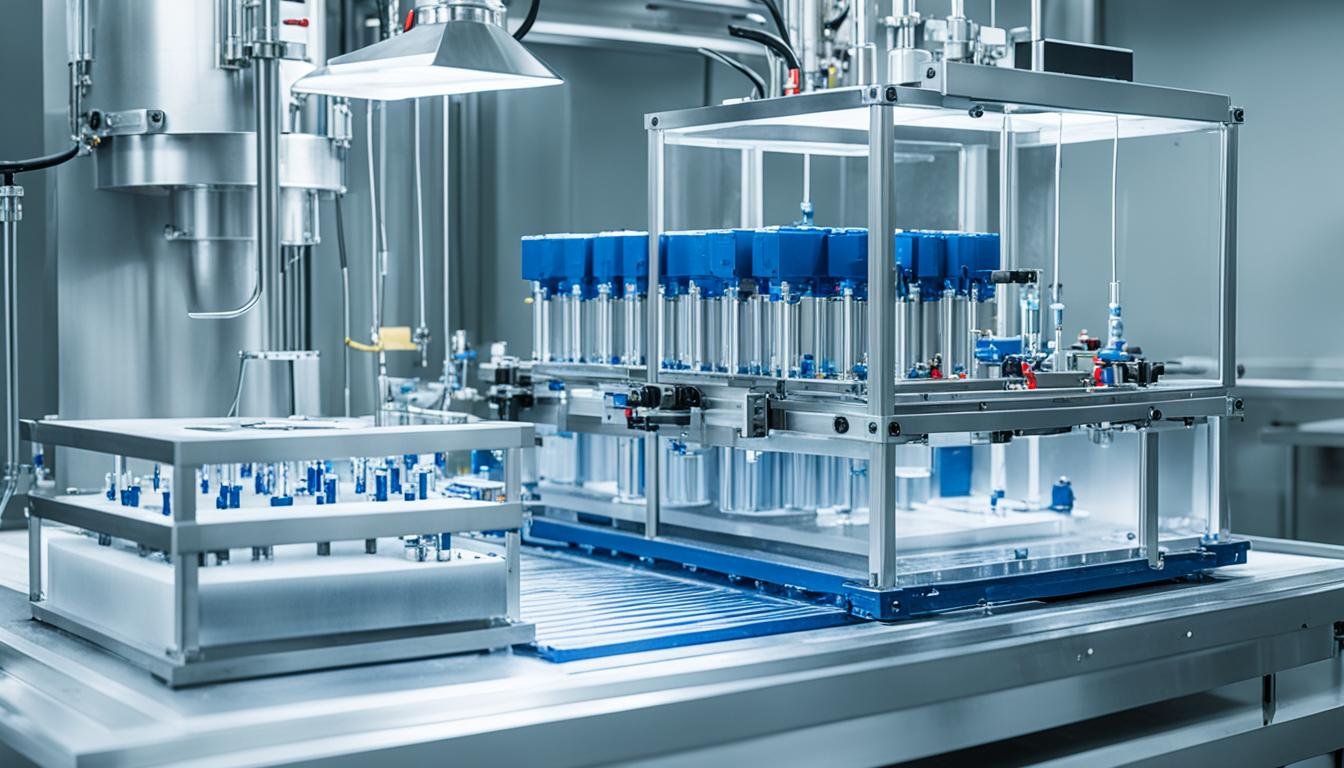Ever wondered why some plastic optical lenses don’t meet the exacting standards needed for certain applications? It all comes down to the THY Precision Injection Molding Optical Lenses process and the fine balance needed for surface accuracy. As a pro in plastic Injection Molding Optical Lenses, you’re well aware of the hurdles in making optical parts with perfect roundness and alignment. But what if you could beat these challenges and make the most of injection-molded optical lenses?
Key Takeaways
- Injection Molding Optical Lenses is a versatile process for making plastic optical parts, but controlling surface contours is key.
- Telecentric lenses need precise barrel roundness and alignment for correct placement and setup.
- The Taguchi design helps find the best Injection Molding Optical Lenses settings to reduce roundness and alignment issues.
- Choosing the right material, designing the mold, and fine-tuning the process are vital for top-notch surface contours.
- Advanced methods like mold simulation and multilayer Injection Molding Optical Lenses can boost surface quality and accuracy.
Introduction to Injection Molding Optical Lenses
At THY Precision, we know how important the injection moulding process is for making precise optical parts like telecentric lenses. This Injection Molding Optical Lenses process step by step is quick and cost-effective for making these complex parts. But, it needs careful control to get the right surface accuracy.
The quality of plastic injection molding parts depends a lot on the right settings and choices. For telecentric lenses, making sure the barrel is round and centered is key. This affects how the lens parts fit together right. THY Precision is great at controlling the molding process to reduce errors from shrinkage and deformation.
The Importance of Surface Contour Accuracy
For optical components, the surface of the parts is very important for their work and how well they perform. If the surface isn’t right, it can cause problems with the light, making the component not work well. THY Precision is good at the injection moulding process step by step. We make sure our optical parts are precise, giving great optical performance and reliability.
“Precision in the injection molding process is key for our optical components. At THY Precision, we aim to go beyond limits, offering top-notch quality and performance.”
Injection Molding Optical Lenses – Factors Affecting Surface Contour Quality
Producing high-quality injection molded optical lenses requires careful choices in material and mold design. THY Precision leads in making precision optical components. They know how important these choices are for the surface finish and accuracy.
Material Selection for injection moulding process step by step
Choosing the right material is key in injection molding. THY Precision picks materials that shrink and deform less. This ensures a smooth surface. They use the Taguchi method and mold flow analysis to test materials. This helps them pick the best ones to avoid surface problems.
Mold Design for injection moulding process step by step
The mold’s design also affects the quality of the lenses. THY Precision uses advanced simulations like Moldex3D. These simulations help them understand how the mold deforms during cooling. This way, they can design the mold to reduce warpage and ensure precise surfaces.
| Factor | Impact on Surface Contour Quality |
|---|---|
| Material Selection | Low shrinkage and deformation rates for consistent surface finish |
| Mold Design | Minimized warpage through in-mold deformation and free deformation analysis |
THY Precision focuses on the injection molding process, material choice, and mold design. This approach helps them make high-quality lenses with great surface accuracy and precision.

“Optimizing the material and mold design is the cornerstone of achieving superior surface quality in injection molded optical components.”
– THY Precision, Chief Engineer
Injection Molding Optical Lenses – Process Parameter Optimization
Getting the surface of injection molded optical lenses just right is key. Process parameter optimization is a big part of this. By tweaking important Injection Molding Optical Lenses settings, makers can cut down on errors and boost the quality of the final product.
Melt Temperature
The melt temperature greatly affects the surface of injection molded optical lenses. Keeping the melt temperature right ensures the material flows well and avoids thermal distortions. Adjusting the melt temperature can stop problems like sink marks and surface blemishes.
Injection Pressure and Speed
Injection pressure and injection speed are key to the final shape of the part. Higher pressures help fill the mold better and cut down on air pockets. Adjusting the speed controls how fast the material moves and reduces defects from shear. Finding the perfect balance between these is crucial for the right surface on optical lenses.
Packing and Cooling
The packing and cooling parts of injection molding are vital for the final surface quality. Good packing fills the mold fully and lessens shrinkage. The cooling phase lets the part set in the right shape. Optimizing packing pressure, time, and cooling time helps lenses have accurate surfaces.
Using the injection moulding process step by step and fine-tuning these key settings helps makers solve surface issues. This way, they can make high-quality optical lenses that meet industry standards.

“The key to exceptional surface quality in injection molded optical lenses lies in the precise control and optimization of the manufacturing process parameters.”
Injection Molding Optical Lenses – Advanced Techniques for Improved Surface Quality
Researchers are looking into new ways to make injection molded optical lenses better. They’re using methods that go beyond the usual Taguchi design and mold flow simulations. These new steps could change the game, giving us much better results.
Mold Simulation and Analysis
One new method is using advanced mold simulation and analysis tools. With these tools, manufacturers can see what happens during the injection molding process. They can spot problems and make the mold design better.
This helps them avoid surface defects and make sure the final product is top-notch.
Multilayer Injection Molding
Another new tech is multilayer injection molding. It lets manufacturers put different materials into the mold at the same time. This makes parts that are complex but also have better surface quality and optical properties.
By controlling how the materials layer, they can get amazing results in surface quality and accuracy.
| Technique | Description | Key Benefits |
|---|---|---|
| Mold Simulation and Analysis | Utilization of advanced software to optimize mold design and predict potential issues | Improved surface quality, reduced defects, and enhanced geometric accuracy |
| Multilayer Injection Molding | Simultaneous injection of multiple materials into the mold | Enhanced surface properties, improved optical characteristics, and increased functionality |
By using these new techniques, THY Precision can make their optical lenses better. They’ll have top-notch surface quality and accuracy. This will give them a big advantage in the market.
Conclusion
This study shows how important it is to fine-tune key factors in the injection molding process for making optical lenses. Using the Taguchi design and mold flow simulations, the best settings were found. These settings help reduce errors in roundness and centering of the lenses.
The study found that melt temperature, packing pressure, and cooling time are key to making lenses precise. This means that by adjusting these factors, manufacturers can make lenses that are very accurate.
Also, the study looked into using advanced techniques like multilayer injection molding. This method can improve the surface quality and accuracy of lenses. By using these methods, companies can make lenses that are perfect for things like telecentric lenses and other special optical systems.
In summary, this study offers useful tips for improving the injection molding process for making high-quality lenses. By following these guidelines, companies can make better optical components. This meets the needs of the market and helps them stand out.

